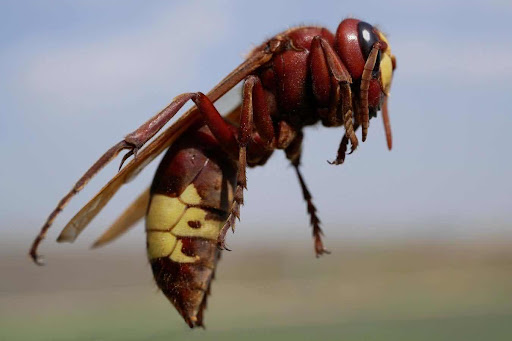





Disclaimer: Copyright infringement is not intended.
A species of hornet can tolerate liquor without any side effects, at levels higher than any known animal.
|
About |
They are a species of wasps, which live in large, highly organized colonies. They belong to the insect family Vespidae, which contains all species of hornets as well as wasps like yellow jackets, potter wasps, paper wasps, and pollen wasps. |
|
Scientific Name |
Vespa orientalis |
|
Diet |
They eat nectar and ripe fruits. Ripe fruits especially include grapes, which naturally ferment in their body to produce ethanol. |
|
Distribution |
They are typically found in Asia, Europe, Africa and North America. The northern giant hornet, or Asian giant hornet is native to Asia and it is the largest known wasp species in the world. |
|
Features |
Alcohol toleration They can tolerate ethanol levels up to 80 per cent higher than any known animal. They show no adverse effects on behaviour or lifespan, even at high ethanol concentrations. While other animals such as fruit flies and tree shrews cannot tolerate more than 4% ethanol. High alcohol tolerance provides them a competitive edge in accessing nutrient-rich fermented foods. Mutualistic Relationship Hornets also have a mutualistic relationship with yeast Saccharomyces cerevisiae which aids both species in survival. Venom They release a higher amount of venom per sting than any other stinging insect. |
|
How do they tolerate high ethanol concentrations? |
Hornets have two to four copies of a specific gene that produces NADP+, which in turn helps break down alcohol. NADP+ is converted to NADPH in the photosynthesis process, due to which the former is less abundant in plants. But in Hornets, due to the abundance of NADP+, they can tolerate high ethanol concentrations. |
|
NADP, NADP+ and NADPH |
NADP is a nicotinamide adenine dinucleotide phosphate molecules coenzyme that transfers electrons in anabolic activities and NADPH is the reduced form of NADP with a hydrogen atom added to it. While NADP+ is the oxidized form of NADP. NADP+ is converted to NADPH in the photosynthesis process when the energy from the sun extracts electrons from water. |
Sources:
|
PRACTICE QUESTION Q.Consider the following statements about the “Hornet species” recently seen in the news:
Which of the above statements are correct? A)1 and 2 only B) 1 and 3 only C)1, 2 and 3 only D)None Answer: B Explanation: Statement 1 is correct: They are a species of wasps, which live in large, highly organised colonies. They belong to the insect family Vespidae, which contains all species of hornets as well as wasps like yellow jackets, potter wasps, paper wasps, and pollen wasps. Statement 2 is incorrect: They are typically found in Asia, Europe, Africa and North America. The northern giant hornet, or Asian giant hornet is native to Asia and it is the largest known wasp species in the world. Statement 3 is correct: They can tolerate ethanol levels up to 80 percent higher than any known animal. They show no adverse effects on behaviour or lifespan, even at high ethanol concentrations. While other animals such as fruit flies and tree shrews cannot tolerate more than 4% ethanol. High alcohol tolerance provides them a competitive edge in accessing nutrient rich fermented foods. |







© 2025 iasgyan. All right reserved